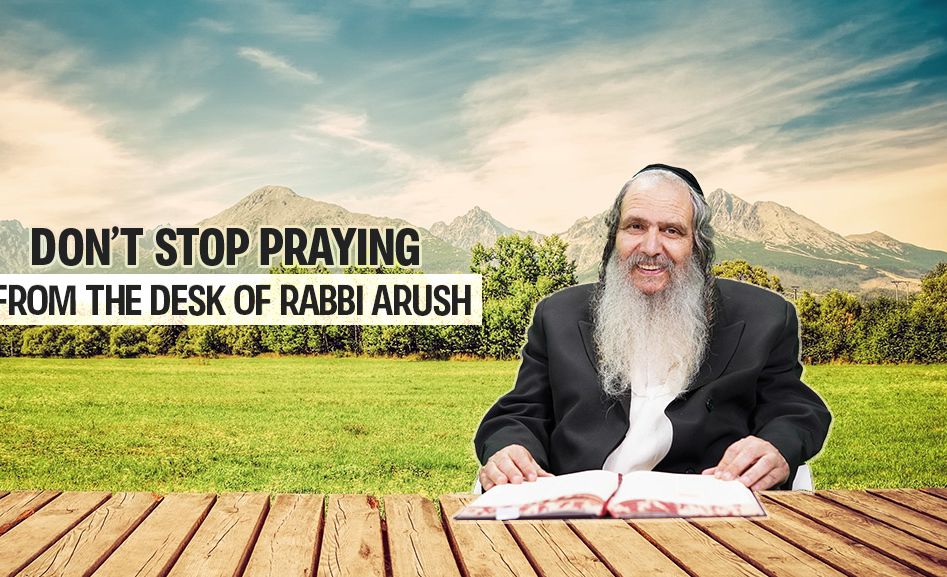
The Rosh Hashanah of Eretz Yisrael
As winter winds down in Eretz Yisrael, Hashem gives His children a wonderful gift! We get a period of revival in the spring to regain the lost momentum of our Rosh Hashanah resolutions. It is not by chance that this revival is happening as we read the Torah portions describing the mishkan (Tabernacle).

Rosh Hashanah is a lot like going to the gym. When you first start, you are excited and keep up the schedule. After a few months, you lose momentum and quite often stop. For the Jewish People, Hashem gives us multiple points throughout the year for revival, renewal, and resumption of the personal goals you originally planned to accomplish.
Rosh Hashanah comes at a great time. The weather is perfect. It’s not hot like August, nor is it cold like November. It’s a great moment to reflect on your life and pledge to Hashem changes that you will make for the coming year.
Like any new initiative, there is an enthusiasm curve. At the beginning, it’s high. After a while, the newness of it becomes routine, but the challenges are still tough. This is what brings the curve down. For some of us, we stop doing what we promised Hashem.
This happens a lot in the winter. Three months after Simchat Torah, it’s cold. The day’s light is engulfed by the night’s darkness more than any time of year. We shrivel up in our beds, trying to maintain the bare minimum of personal obligations. The new steps we pledged a few months earlier begin to freeze with just about everything else.
It will be a few months until Pesach, when spring is in full force, and we get that spiritual jolt to remember what we wanted to do six months prior. In Israel, we have a “Pesach moment” in the heart of winter. A spark in the darkness comes to reignite our flame.
Winter’s Elul
In Israel, Hashem willing, the first rains come a few weeks before Chanukah. After the first rains, the dry, gray dust of the earth begins to sport some green stubble.
By Chanukah, the ground transforms into an oasis of light green. The sky may be asleep with darkness, but the earth is awakening from its summer slumber.
Seas of lush grass emerge everywhere. The flowers begin to sprout. First come the light violet rakefet, then the bright yellow savionim. It may be cold and dark, but the land is beginning to dance in colorful shades of bright beauty.
A rebirth is happening. If you look closely, you can feel it. By late January, the fiery Kalanit shine their radiance throughout the entire Land of Israel. A simple stroll becomes pure inspiration.
Tu B’Shvat is the rallying cry for the Land! It’s when the flowers are dancing among the grass-filled forests all over Israel.
The Revival Before the Revival
All my life, the improvements I made were in the fall. If I woke up late in the summer, by October, I would stop hitting the snooze button. If my learning got a little thin, the Tishrei momentum got me back on track.
The winter was when I crashed. Like everything else, I simply fell asleep.
Living in the Jezreel Valley, now I can feel the earth start to breathe again. It’s no longer when the leaves fall that I rise. It’s the dead of winter when I find myself telling the sun to get up. It’s the height of darkness when I follow the light of my phone into the kitchen to have my cup of coffee.
This is God’s gift to His children. An extra period of revival so they don’t let their Rosh Hashanah promises fall apart. It’s like the moon. Just when the sky is completely dark, the moon is beginning to re-emerge from the depths.
The gifts of this time of year, given to Hashem’s children on His Land, make sure that we never stop pushing . . . and we never will.
Special Bonus
I just discovered something amazing.
These current Torah portions are about building the mishkan (Tabernacle in the desert), the attire for the Kohen Gadol, and the sacrifices. There are many things, like flax, oxen, and twisted linen, where we understand the words but have no idea what these things are.
While reading these Torah portions, there is a temptation to “skim” the things we can’t directly relate to. When you see something like this, Google it. Go to the Videos tab of the search page and watch a five-minute video about where it comes from.
Let’s take “twisted linen,” for example. If you Google it, then see some videos about where linen comes from, you make some fascinating discoveries. Linen comes from the flaxseed plant. This plant grows, produces its seeds, and then the harvester will cut its stem off. If you leave the root, another stem will grow that bears more seeds.
There is a light purple flower that adorns the flaxseed plant. When it blossoms, the flower will sit for a few hours, then fall off by nightfall. The next day, it grows another flower. When this plant is harvested with the roots, it is processed to become thread that is turned into sheets and clothing.
This is just a single plant. In a field, there could be millions of them – all performing miracles.
What a world Hashem gives us!
I cannot see a greater way to celebrate the Torah portion where Hashem gives the Jewish People the gift of building a place for us to perceive His presence loud and clear.
**
David Ben Horin lives in Afula with his family, millions of sunflowers, and Matilda, our local camel. David‘s Israeli startup, 300 Marketing Solutions, is a lean marketing agency for startups and small businesses that creates and promotes SEO-optimized ROI-driven to the right audience on LinkedIn to make your business the star of the show.







Tell us what you think!
Thank you for your comment!
It will be published after approval by the Editor.